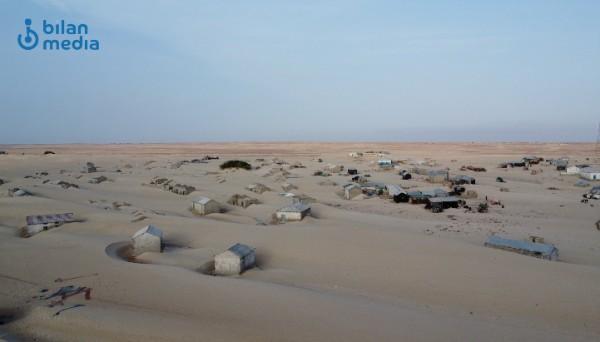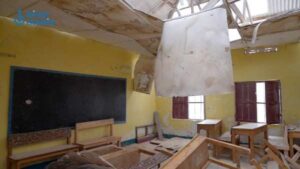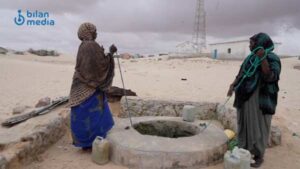Dhinowdo: A Town Swallowed by Sand, a Future at Risk.

Dhinowdo, once a bustling coastal town home to over 3,000 families, is now facing a slow-moving natural disaster that is swallowing the community and its environment. Strong, shifting sand carried by harsh winds has overtaken homes, wells, schools, and even the town’s health center.
Dhinowdo, once a bustling coastal town home to over 3,000 families, is now facing a slow-moving natural disaster that is swallowing the community and its environment. Strong, shifting sand carried by harsh winds has overtaken homes, wells, schools, and even the town’s health center.
The old stone houses have been buried, their rooftops barely visible above the sand. Abdirahim Sheikh, a resident, described the scene with deep emotion:
"Where I’m standing used to be the center of the town; I’m on top of the old houses, now all covered in sand. We used to have sturdy buildings, but now we live in simple shelters made of tarpaulin and metal sheets, so we can escape when the sand comes."

Clean water is becoming increasingly scarce in Dhinowdo, with around 90% of the town’s wells buried under sand. The remaining residents are fighting not just for daily survival, but for the very future of their community. Hinda Rooraaye, another local, explained the struggle:
"Every week, we dig wells because the sand buries them. We dig inside and around the wells to find water. We collect what little water we can, but it’s exhausting. People suffer from carrying water through the sand. We’ve had back pain and kidney problems because of it."

Currently, only two wells are functioning. Each morning, residents return saying, “Last night the well was buried.” Then the cycle begins again as they dig anew.
The town’s school, which once offered hope to children, has also been swallowed by sand. Classrooms are filled with sand, making learning impossible. Xaashi Cabdi, the school’s headmaster, said:
"The school closed because of the sand. Neighboring towns have machines to clear the sand, but we don’t. That’s why the school can’t operate, and the children stay at home without education."

The town’s health center has also been buried, leaving pregnant women and mothers with little access to care. Traditional midwife Xaawa Maxamuud Sahal explained:
"I’m really worried. They have no medical support. Sometimes women give birth with heavy bleeding because of poor conditions. We try to help, but when complications arise, we have to send them to Gaalkacyo. Recently, a baby was born, and the mother started bleeding badly. All we could do was read the Qur’an; there was nothing else we could do."
The sand has reached into the sea, up to five miles offshore, affecting the local fisheries. The once-abundant fish and seafood have declined sharply. Fisherman Maxamed Macalin explained:
"We used to find plenty of seafood near the shore, but the sand has covered the area. The resources have diminished, and foreign fishermen are increasing, so we can’t even go five miles out to fish."

Today, only two trees remain in Dhinowdo. One of them is cared for by elderly volunteer Xaawo Sheekh, who struggles to protect the environment. She said:
"People ask me, 'Why do you bother with this tree?' I tell them, if the area under it is maintained, it can survive. I am old, and I don’t think I can plant more trees now."
The changing climate less rainfall, stronger winds, and rising temperatures, is at the root of Dhinowdo’s disaster. What was once a thriving coastal town now faces the risk that those remaining may have to abandon it if no action is taken.
Nearly 2,000 families have already left. Those still in the town live in constant fear, trying to withstand the encroaching sand. One resident said:
"We are not just fighting for our daily survival; we are fighting for our future and to make sure this place does not become a place of despair."

What can save Dhinowdo?
The town urgently needs:
• Tools and equipment to control the spreading sand
• Reforestation and planting of protective trees
• Sustainable wells that won’t easily be buried
• A long-term environmental plan
• Immediate humanitarian aid.
If these actions are taken, Dhinowdo can still be saved. But without intervention, the disaster may become irreversible.
Written by Farhia Muraad.
